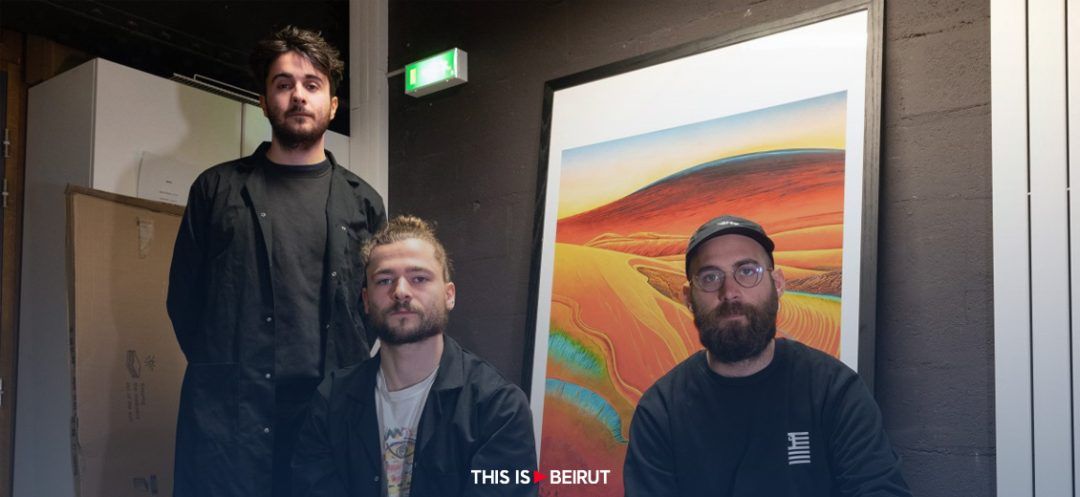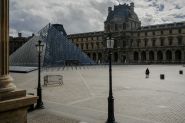
French art collective achieves a groundbreaking feat, using AI to generate images from brain activity scans as one artist thinks of scenes inspired by text prompts.
A French art collective called “Obvious” has used artificial intelligence to generate images directly from an artist’s brain activity. By having one of the artists, Pierre Fautrel, imagine scenes while inside an MRI machine, they were able to train an AI to reconstruct the visualizations from the neural data alone.
The resulting artwork, depicting a dark mountain looming over red plains surrounding an enigmatic blue shape, represents the first time a purely imagined scene has been externalized in this way. “In my head, I thought very hard about a volcano,” Fautrel explained about his mental imagery during the hour-long MRI scan.
For nearly a year, the three artists in their 30s – Fautrel, Hugo Caselles-Dupré and Gauthier Vernier – have dedicated themselves fully to the “Mind to Image” project. Though it may sound like science fiction, their aim is to faithfully transcribe an artist’s imagination using generative AI.
To accomplish this, they started with an existing open-source model called MindEye, which matches seen images to brain activity. They then trained their own AI in multiple stages, first by showing one artist portraits and landscapes in the MRI to map which brain regions activate, using that data to feed the AI.
The AI attempted to reconstruct the original images solely from the brain data, having never seen them during training. This process was repeated many times over about 10 hours to create a database. Next, they replicated the exercise using only the artist’s memories of the images.
Finally, they attempted pure imagination, with the artist picturing scenes in response to short text descriptions, known as “prompts,” which were written before entering the MRI. While it’s been possible for about a decade to recreate seen images from visual cortex activity, doing so for imagined scenes is far more challenging.
Several dozen hours are needed to sort through the MRI data before providing it to the AI. But once that work is done, the image generation itself is nearly instantaneous on high-powered computers, notes Caselles-Dupré.
Neuroradiologist Charles Mellerio, who is participating in the research project, says he never would have believed it possible even two years ago. He attributes this “technical feat” to dual advancements in recent years – major progress in medical imaging resolution and precision, coupled with the meteoric rise of generative AI.
The Obvious collective also drew inspiration from Surrealism, the art movement celebrating its 100th anniversary in 2024, to imbue their algorithm’s creations with a distinctive style. Fautrel sees their experimentation as a means of “reinterpreting Surrealism” by finding ways to minimize the gap between mental imagery and artistic realization, a key Surrealist aim.
“For us, there are real links between art and science,” adds Caselles-Dupré, while acknowledging the potential for such technology to be very frightening if misused. Looking ahead, the trio hopes to expand their trials to reconstruct sound and video as well. This October, they plan to showcase their various AI-generated works at the Danysz gallery in Paris.
“Obvious” first stunned the art world in 2018 when they sold a fictitious, AI-produced portrait with blurry features, titled Edmond de Belamy, for over 400,000 euros at Christie’s auction house in New York. It was billed as the first artwork created by artificial intelligence software.
With “Mind to Image,” they have now achieved an even more remarkable milestone at the intersection of art, neuroscience and artificial intelligence. As these fields continue to evolve in tandem, the boundaries of creative expression are poised to expand in ways previously unimaginable.
With AFP
Read more




Comments